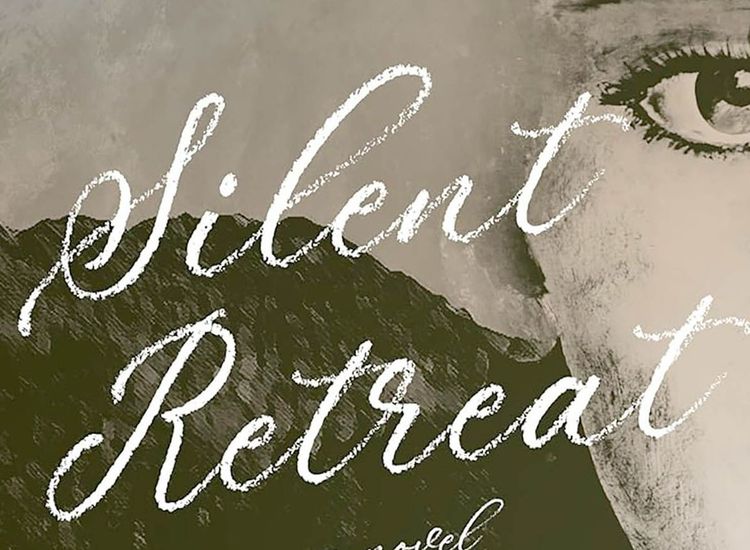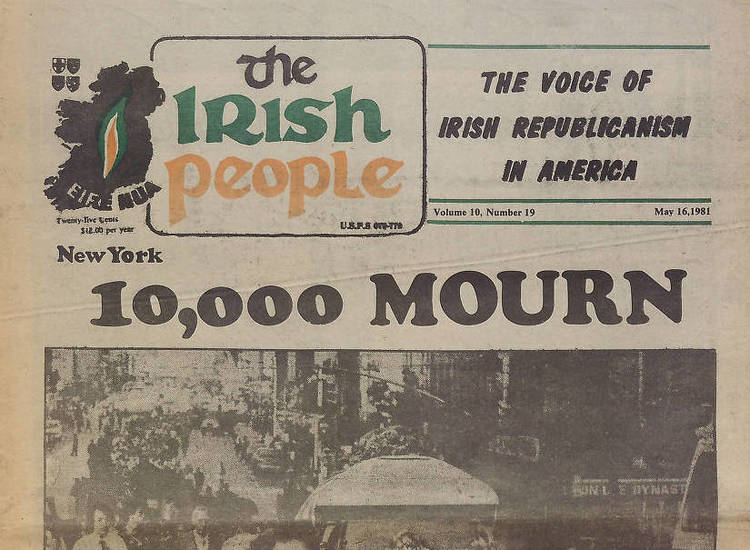Dr. Ellen Rowley.
Page Turner / Edited by Peter McDermott
In this week of Bloomsday, one can detect Joycean undertones in scholar Ellen Rowley’s statement: “I am inspired by bread and butter architecture and the stuff of ordinary life.”
Her latest book, “More Than Concrete Blocks: Vol.1 1900 – 1940,” is the first in a series she is editing about the history of architecture in 20th century Dublin.
“My intention always,” Rowley said, “is to uncover hidden histories of very familiar or everyday sites.”
Volumes II (1940-1973) and III (1973-2000), also to be edited by Rowley, are in the works. The illustrated series, written for the general reader, considers Dublin as a “layered and complex place,” the publisher tells us, and it makes links between the city’s buildings and its political, social, cultural and economic histories.
Volume I has 26 case studies and an overview, in guidebook style, of almost 100 sites. Much of the history touches on the roles of streets in revolution and of buildings in the construction of the state. It’s not a “best of” but a representation of architectural endeavor of the time.
Rowley’s own endeavors currently include a “longer-term project around the architecture of Catholic Ireland, 1940–1980” as well as three books.
“The first is my history of housing in Dublin, 1935–75, called ‘Building on the Edge,’ to be published by Routledge’s architecture research series in 2018,” she reported.
The second is the next volume of “More Than Concrete Blocks,” which will contain the “histories of much maligned and endangered modernist structures in Dublin such as Liberty Hall and the Bord Failte building, as well as histories of little-known gems such as Inchicore Vocational College and St Mary’s Church of Ireland church in Crumlin.”
The author added: “My third book is a children’s book calling ‘Walking Back’ and it’s a day-long adventure of two children in early 1950s Dublin, making their way from their new home in suburban Dublin to their former tenement neighborhood in the north city centre, and the fortunes/mishaps encountered along the way. This story is inspired by the oral histories of former-residents of Henrietta Street and tenement Dublin.
“As I develop the ‘Architecture of C20th Dublin’ project,” the Trinity- and Cambridge-educated Rowley said, “I am at the start of learning my trade as a children’s picture book illustrator and writer. My children hugely inspire me and I’d love to publish a picture book while they are still very young and such avid picture-book consumers.”
Ellen Rowley
Date of birth: Oct. 9, 1973
Place of birth: Dublin
Spouse: Stephen Quinn, he’s a social worker, a bread maker, a pragmatic parent and a hero.
Children: Lillian, 10, Esme Frances (6) and Joany-pony (4)
Residence: Ballybough, Dublin 3 (North Inner City)
Published works: “More Than Concrete Blocks: Vol.1 1900 – 1940” (Four Courts Press, with Dublin City Council and UCD, 2016); “Art and Architecture of Ireland Volume IV: Architecture 1600-2000,” with Rolf Loeber, Hugh Campbell, Livia Hurley and John Montague (Royal Irish Academy, Yale University Press, 2014); “i.e. Patterns of Thought” (Arts Council Ireland, 2010).

What is your writing routine? Are there ideal conditions?
I try to block out two days in a row but at the moment, as we’re developing the Tenement Museum Dublin in no.14 Henrietta St., there isn’t the opportunity for blank writing days. But ideally, I would write for 2-3 days in a row, always starting with an early morning (5.30 a.m.) and a cup of very hot sweet tea. By about 11 a.m., I make a pot of coffee. I prefer to write at home (or at a quiet office space if I have access to one) rather than at a library, so that I have freedom to drink my coffee and move around a bit.
Quite a lot of writing time is distracted and restless time, looking at the ceiling and so on, so for me, it is best to be alone. I need to hide my phone or else I message family and friends, consistently – being a mama (to my three little ladies) means that I’m always making/confirming plans and can find it very hard to just “be” in the moment and concentrate.
What advice do you have for aspiring writers?
I would have to give that irritatingly true advice, which I thought was from the great P.G. Wodehouse but it seems to be an anonymous/universal stratagem, “Apply the seat of your pants to the seat of the chair” i.e. just do it: it’s hard work, it’s slow and it’s about diligence and endurance.
Name three books that are memorable in terms of your reading pleasure.
As a young person, in formation: Harper Lee, “To Kill a Mocking Bird”; Chaim Potok, “My Name is Asher Lev”; Primo Levi, “If this is a Man.” As an adult, still in formation: John Kennedy Toole, “The Confederacy of Dunces”; Jonathan Franzen, “The Corrections;” Donna Tartt, “The Goldfinch.”
What book are you currently reading?
For work, Paul Smith, “The Countrywoman.” Written circa 1960, this was banned until 1975 and it is an extraordinary account of 1920s tenement life in Dublin. It is beautifully written but harrowing in content with lots of sex (abortion and marital rape) set to the backdrop of burgeoning independence and the bitter Civil War.
For myself, I am reading Robert Seethaler, “A Whole Life” and also, picking up and down the beautiful volume of poems by Paula Meehan, “Mysteries of Home.”
Is there a book you wish you had written?
That changes every few years. Right now, it’s “Iggy Peck Architect,” written by Andrea Beaty and illustrated by David Roberts. There is dexterity and detail that is mouth-watering.
Name a book that you were pleasantly surprised by.
Recently, two books given to me by two great friends pleasantly surprised me; in short, both were quite brilliant and I couldn’t have imagined how brilliant. Firstly, Sue Monk Kidd, “The Invention of Wings” and secondly, Maggie O’Farrell, “This Must be the Place.”
If you could meet one author, living or dead, who would it be?
Roald Dahl; David Roberts (illustrator)
What book changed your life?
Sean Rothery, “Ireland and the New Architecture, 1900 – 1940” (Lilliput Press, 1991). It was/is inspirational and set the record straight, and I encountered it as I set off on my postgraduate adventures.
What is your favorite spot in Ireland?
Dublin and my house in Ballybough. I love the city and I love living in the middle of it. Outside of Dublin, I am happiest amongst the hedgerows of Wexford, lately the area of Slade, Hook Head.
You're Irish if...
You’re a body of contradictions: lazy and energetic, passive and aggressive, hypocritical and honest, funny and tragic.









